Have you ever wondered how to dry a sourdough starter? It’s really easy and fun!
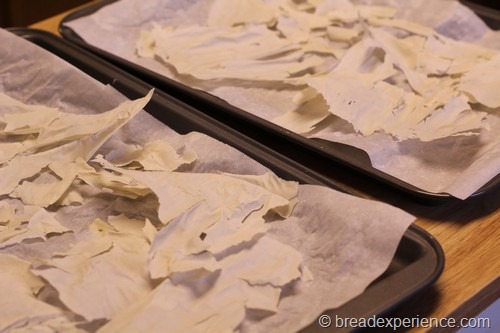
There are a number of reasons why you might want to dry or dehydrate your sourdough starter. For one thing, it makes for easy storage. It can also serve as a backup in case you forget to save some when you use your starter to make bread. Or, if your starter goes bad for any reason, you can restart the dried starter without having to begin the process of creating a new one all over again.
Drying some of my sourdough starter has been on my list for a long time, but I just hadn’t gotten around to it. However, necessity is the mother of invention as they say, and this is what finally led me to try this experiment.
My motivation for going through this process was simply due to the fact that a sourdough culture is more portable/transferrable in the dried state than in the liquid state. It’s not very practical to carry a jar of sourdough around with you, although I must admit I have tried it. Just ask my sons about the time we went to Tybee Island a few years ago and how I kept my starter in the room and fed it everyday. That was an interesting experience, but not very practical.
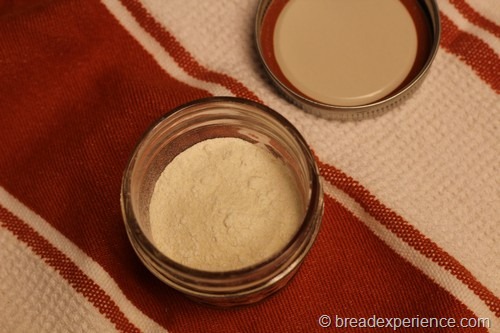
My journey into the world of drying my own sourdough began a few weeks ago when I attended a get together with one of my hiking groups. I got into a conversation with another bread enthusiast and she mentioned that she liked to make sourdough breads but hadn’t been able to successfully cultivate a sourdough starter yet. I told her about the starters I had cultivated and that I had documented the process on my blog. It occurred to me later that night that I could just share some of my starter with her. So I asked her if she would be willing to be my tester for this project and she agreed.
Thus began my experiment with drying a sourdough culture…
I’ve been working on this experiment for several weeks. I’ve dried and restarted my sourdough starter numerous times to make sure the process and the culture work properly. I’ve got the drying part down so that’s what I’ll focus on in this post.
Here is the process for restarting a dried sourdough.
How to Dry a Sourdough Starter
Here is the process I used to dry some of my apple starter. I love hiking and this is the starter that I created from the apples I picked when I went apple picking and hiking last Fall. It seemed only fitting that it should be immortalized in dried form and shared amongst the hiking community.
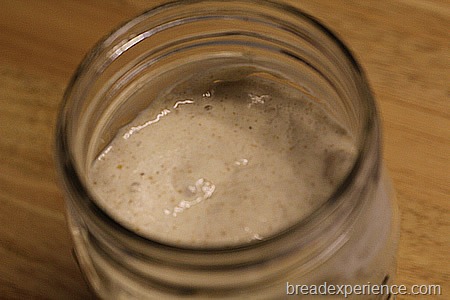
1) Feed the mature sourdough starter
You want to make sure your starter is active so begin the process by feeding it a few hours before you plan to dry some of it. There are a couple of ways to do this. One way is to take a couple of tablespoons of the sourdough that you would normally discard and feed it with 20 grams of water and 20 grams of flour. Then feed the remaining starter using your normal feeding schedule/process.
I found it easier to just discard the amount I usually discard when I feed my starter: 250 grams. Then I fed the remaining starter with 125 grams of water and 125 grams of sourdough as I usually do. Once the starter was active, I took the amount that I wanted to dry out of the fed starter and put the remaining starter in a clean jar and placed it back in the refrigerator for use another day. I did this several times so my starter was nicely fed and happy over the past few weeks.
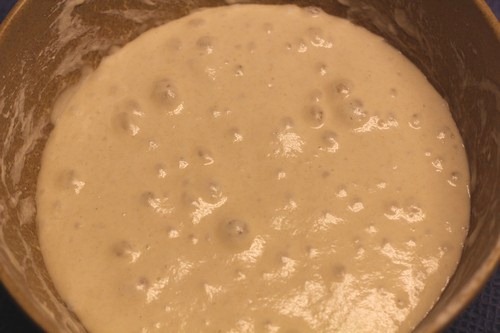
2) Spread the starter out to dry
Once the starter is active and bubbly, take a couple of tablespoons of the active starter and spread it on a parchment-lined baking sheet. I used a pastry brush but you could also use a spatula. If your starter is too thick, you can thin it by adding a little bit of water to make it easier to spread. I tried it with extra water and without extra water and it worked either way.
I tested it several times using the parchment-lined baking sheet and parchment-lined cooling racks. Both methods work, but the air seems to circulate a little bit better with the cooling racks.

3) Place the baking sheets in a warm place
I put the parchment-lined baking sheets and cooling racks in the oven with the light on for several hours and then turned the light off. If the oven got to cold, I would turn the light back on for a little while and then turn it off. This seemed to aid the drying process without being too hot to kill the yeast spores. It was rainy and damp during a lot of my experiment so it took a couple of days to completely dry the starter on several attempts, but on the last attempt, it only took one day because it was sunny and warm.
When the starter is ready, it should be completely dry and crackly.
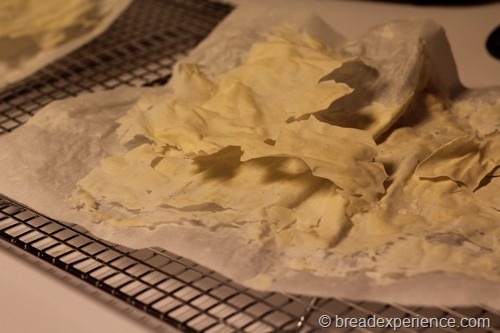
4) Grind the dried starter
Once it is fully dried, grind the flakes using a mortar and pestle or place the flakes in a Ziploc bag and use a rolling pin to crush them. Or, you could even use a food processor. I tried the mortal and pestle method, but the starter pieces kept jumping out of the bowl so I opted to grind them in my coffee grinder instead. That worked really well.
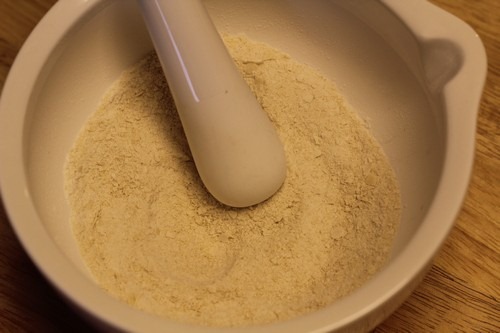
5) Storing and sharing the dried culture
So there you have it! A dried sourdough culture that is portable and storable. You can keep it in a Ziploc bag in the freezer and/or share some with your bread-baking friends.
I have two jars of dried sourdough at this point. I put one jar in the freezer and labeled it with the date. The other jar will be divided up and placed in Ziploc bags to give away. It only takes a couple of teaspoons to restart the sourdough.
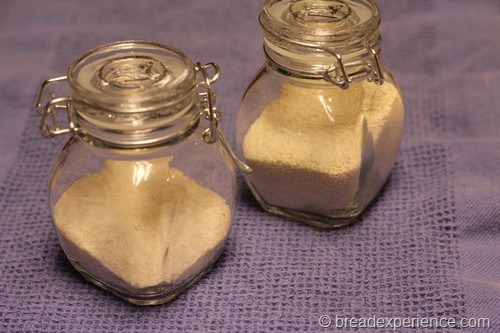
Now, it’s time to take some of the dried culture on one of my hiking excursions and let my hiking buddy test it for me.
When you are ready to reactivate your dried sourdough, refer to this post on restarting a dried sourdough.
Happy Baking!
Cathy
Here are some of the resources I found useful for learning how to dry a sourdough starter:
Judy's Bakery & Test Kitchen says
Thanks so much, Cathy! I look forward to the second half of this post.
Melanie says
Thank you so much for sharing! Very nice, detailed directions & so easy to follow.
Cathy (breadexperience) says
Thanks Ladies! It’s funny how I waited so long to do this and it’s really easy and kind of fun. It’s like a science project.
Heather @girlichef.com says
Wow, that is really, really cool!
Arlette says
Hello Cathy,
Thanks so much for sharing this technique which i never heard of. I look forward to read part two and learn how you can activate this starter again…I do sourdough with raisin and pineapple, never tried the apples yet… I have to give it a try soon.
thanks again Arlette
Cathy (breadexperience) says
Hi Arlette, Thanks for stopping by. Sourdough with raisin and pineapple sounds really interesting. I’ve tried grapes, but not raisins.
nadine says
Can you store your dried starter in room temperature instead of freezing, and if you can how long will it keep?
Cathy says
The dried sourdough should be kept in a cool, dry place. You can typically store your dried sourdough starter at room temperatures between 68 to 78 degrees F. for up to a year. Or, in the refrigerator or freezer for 12+ months.